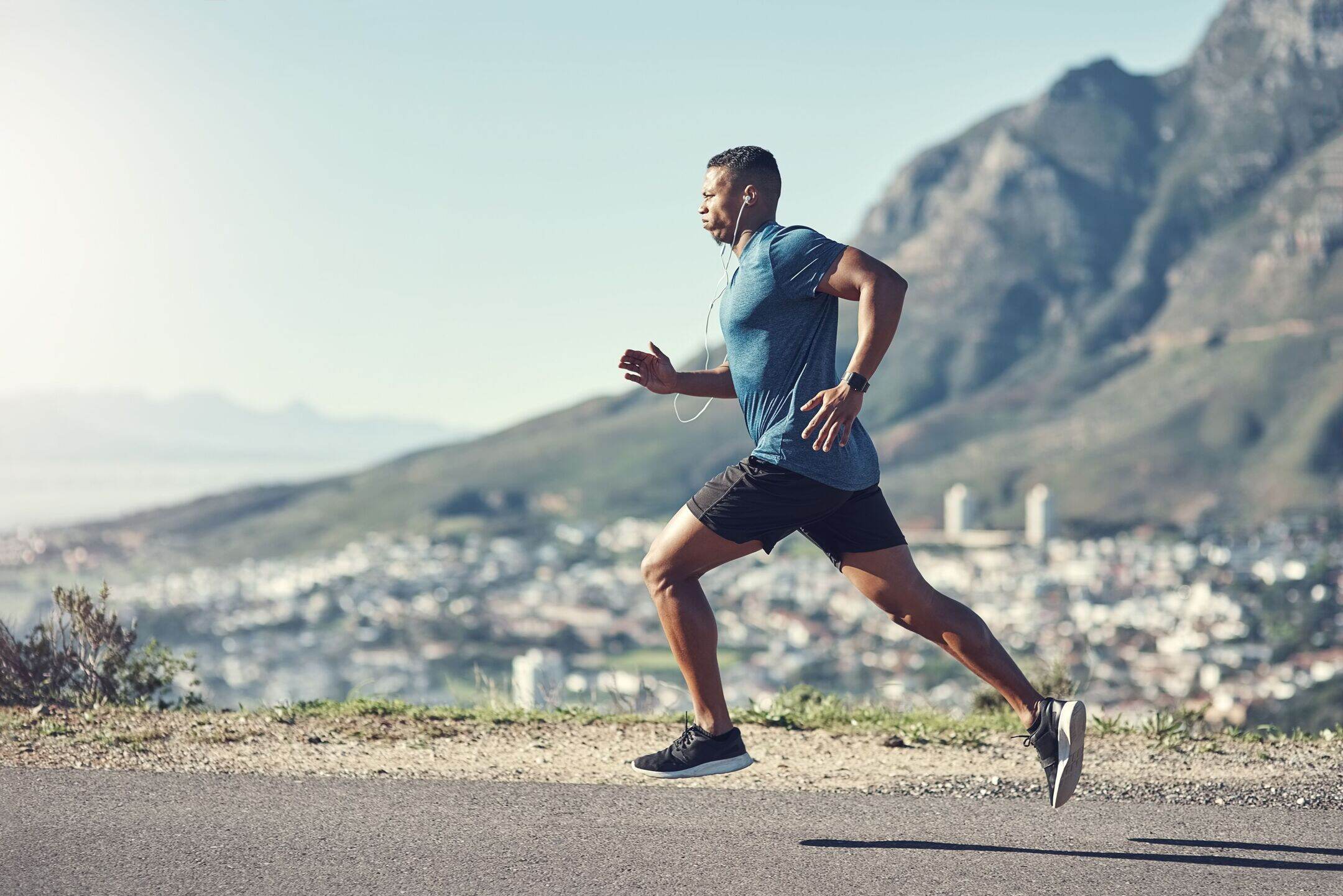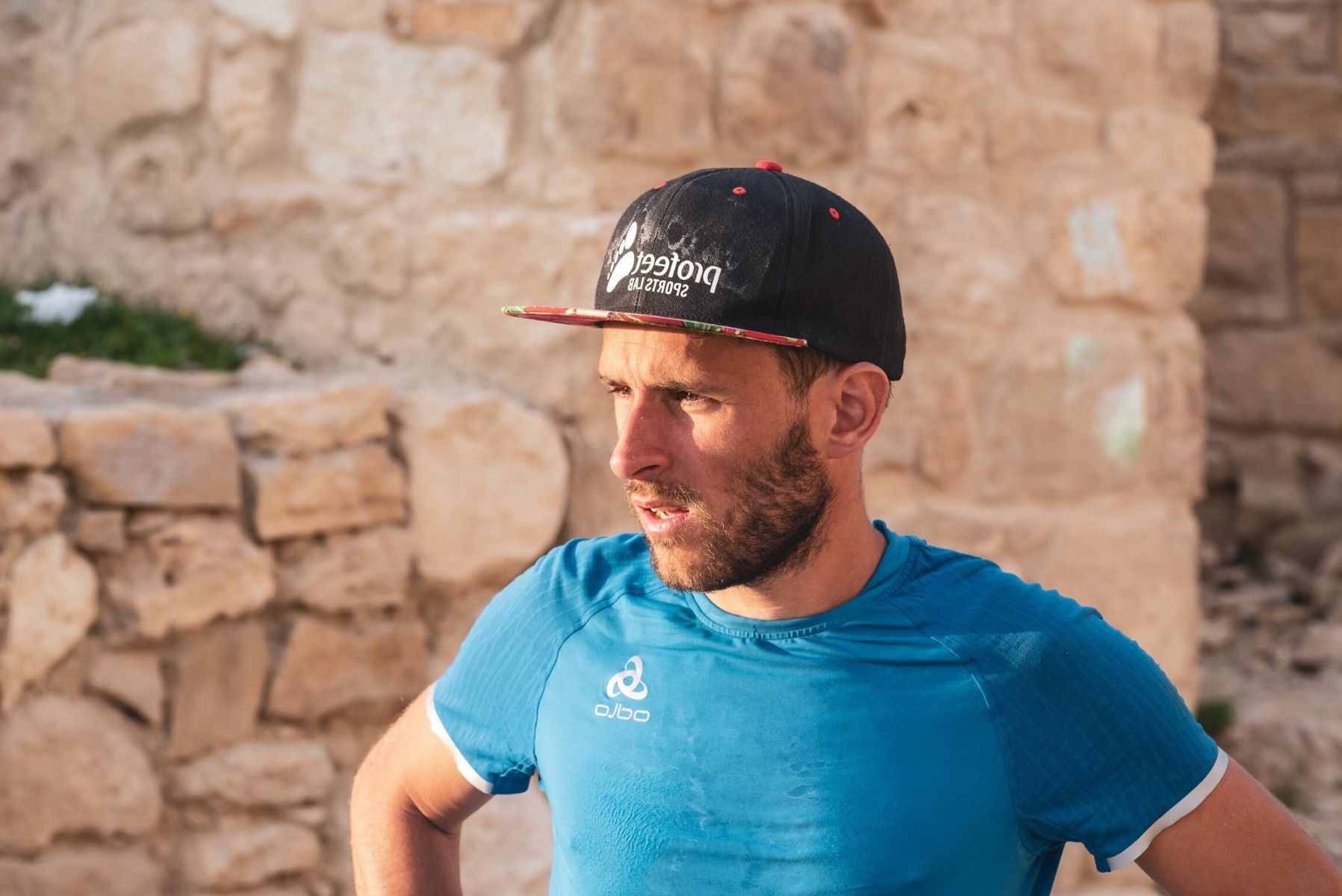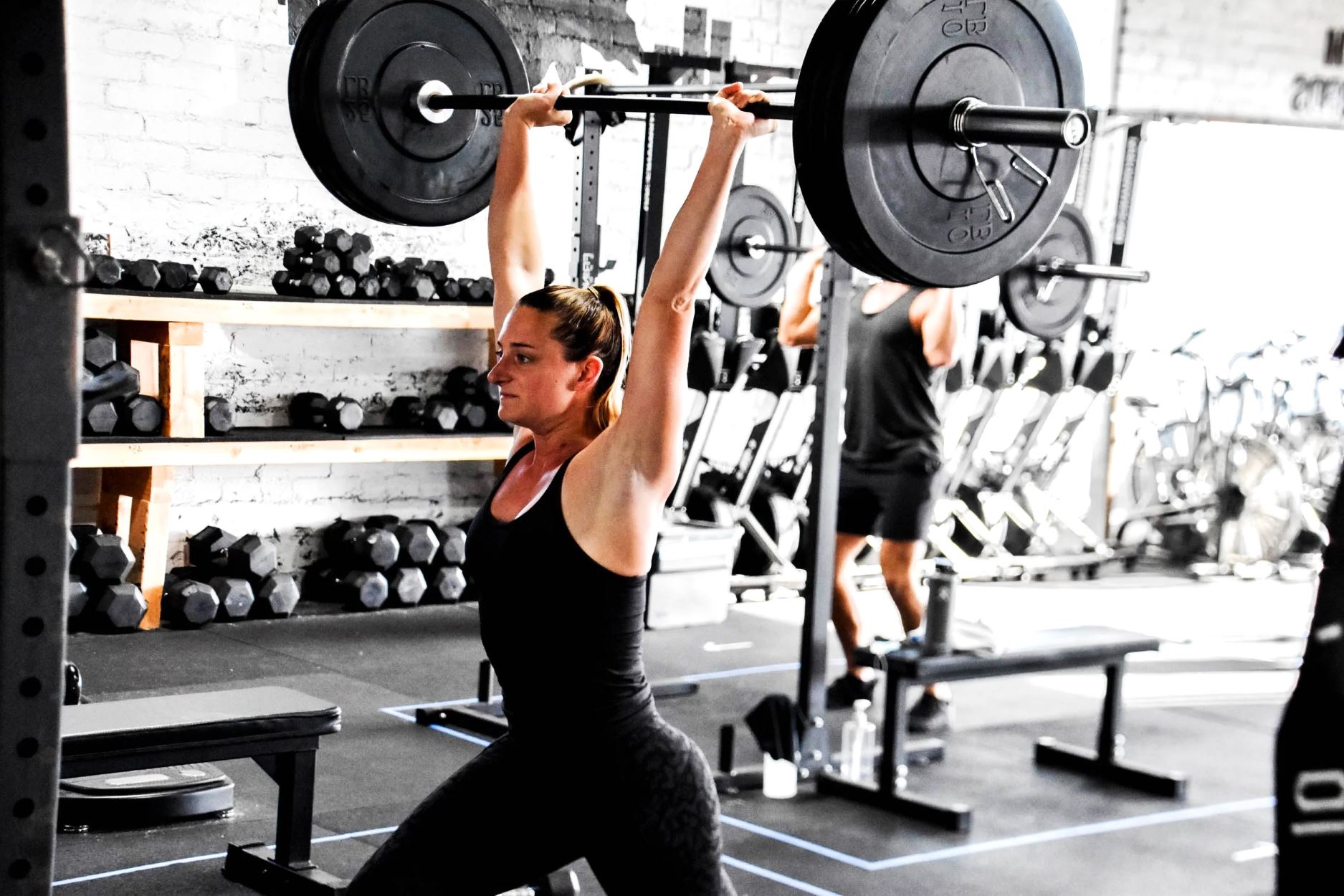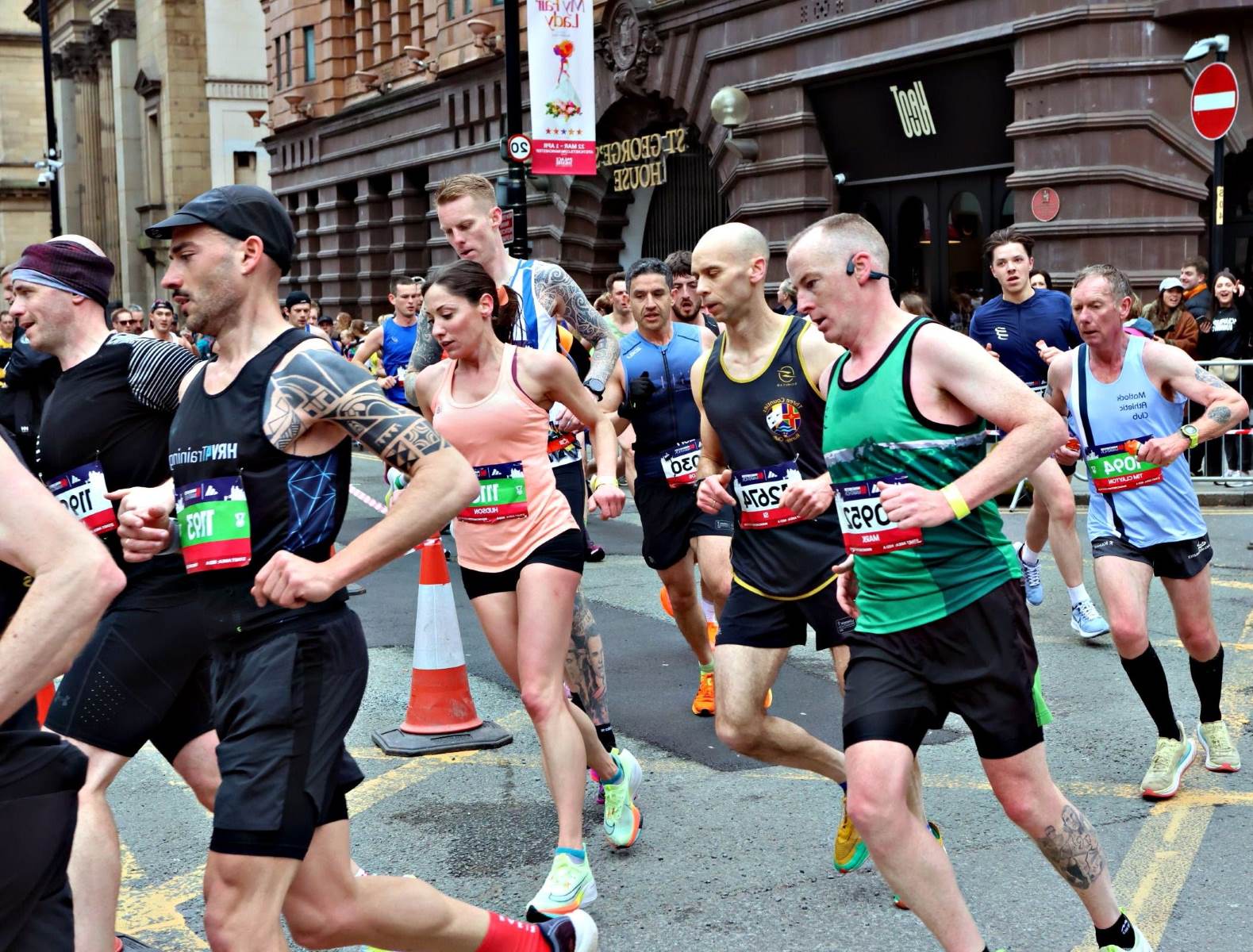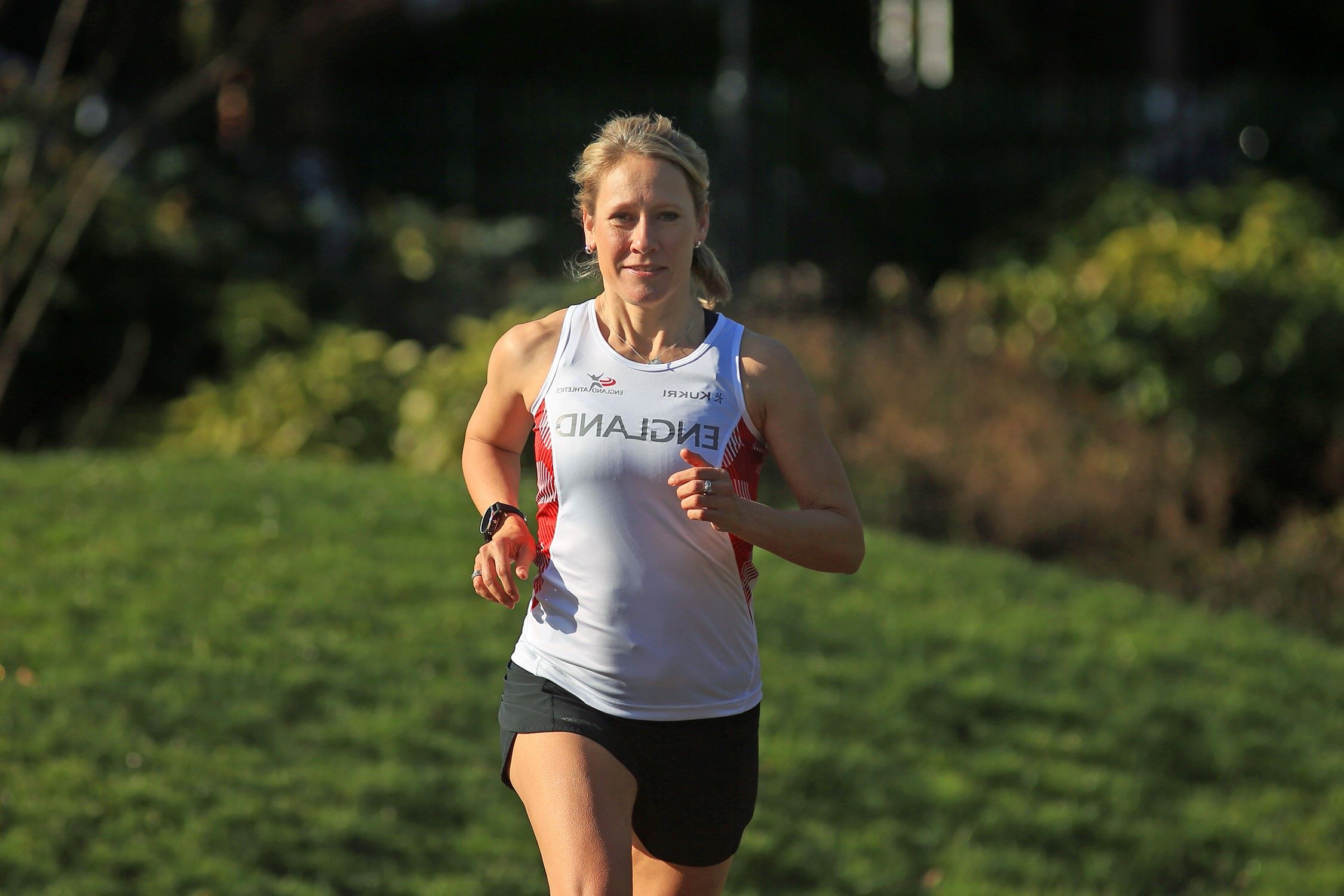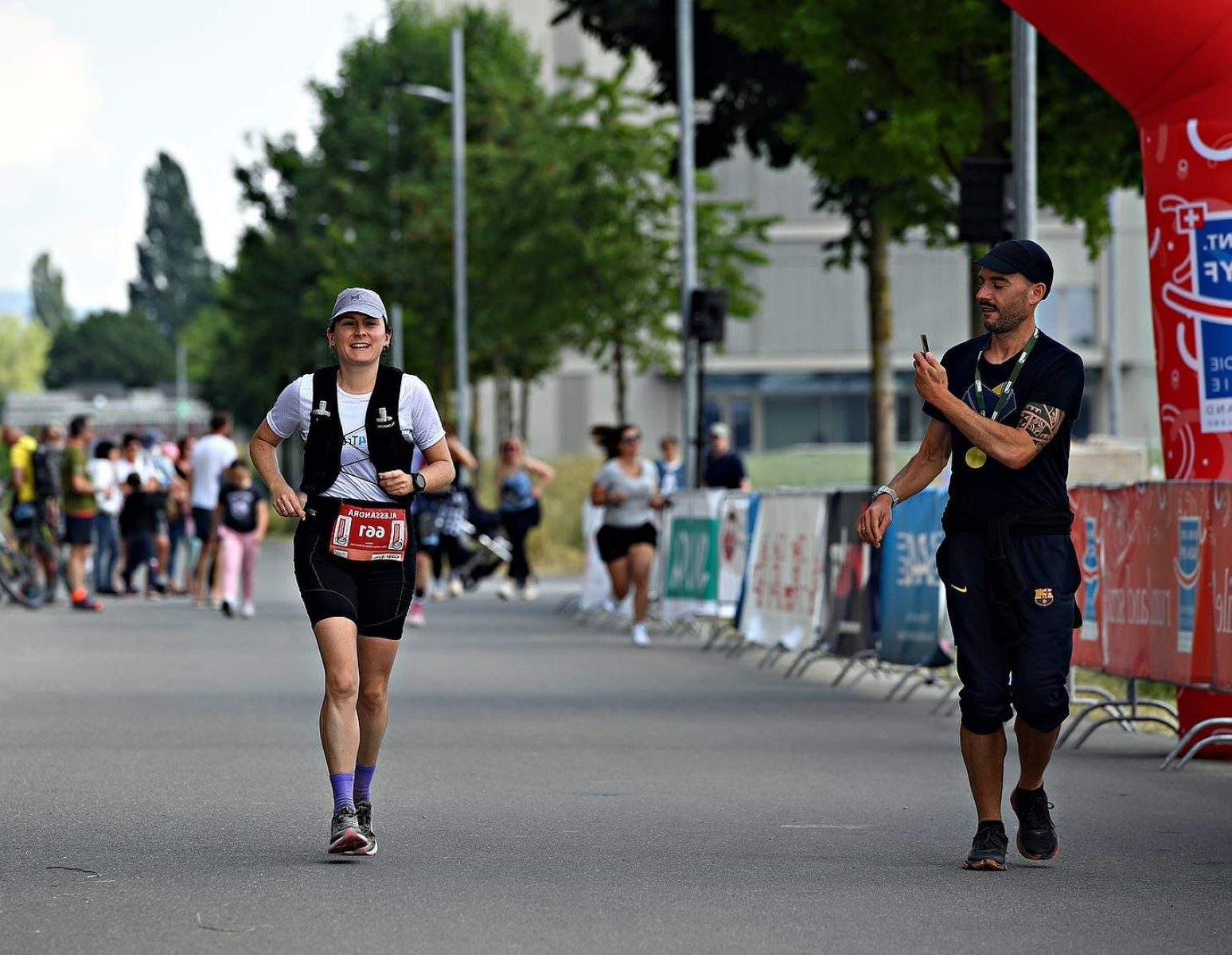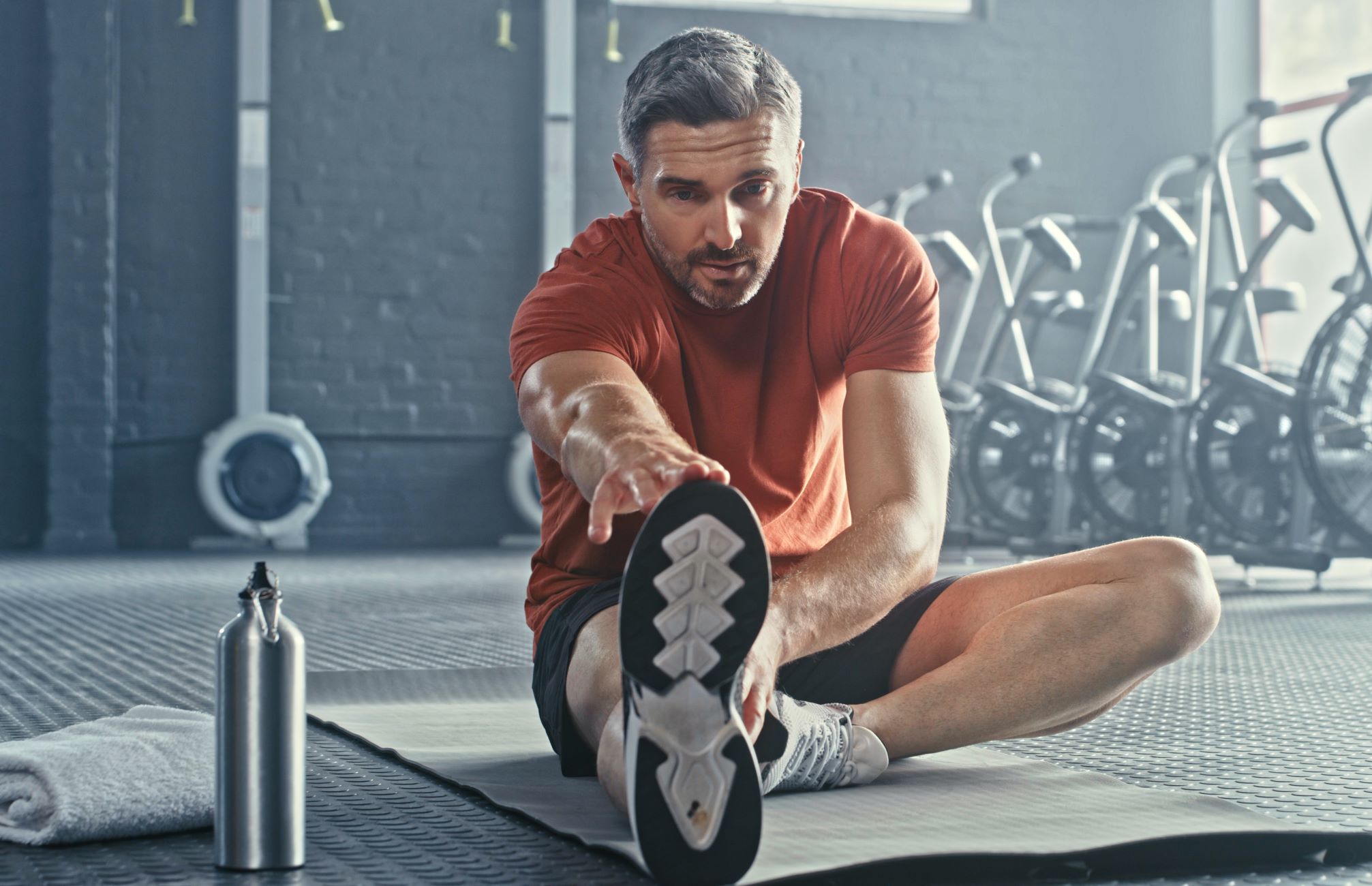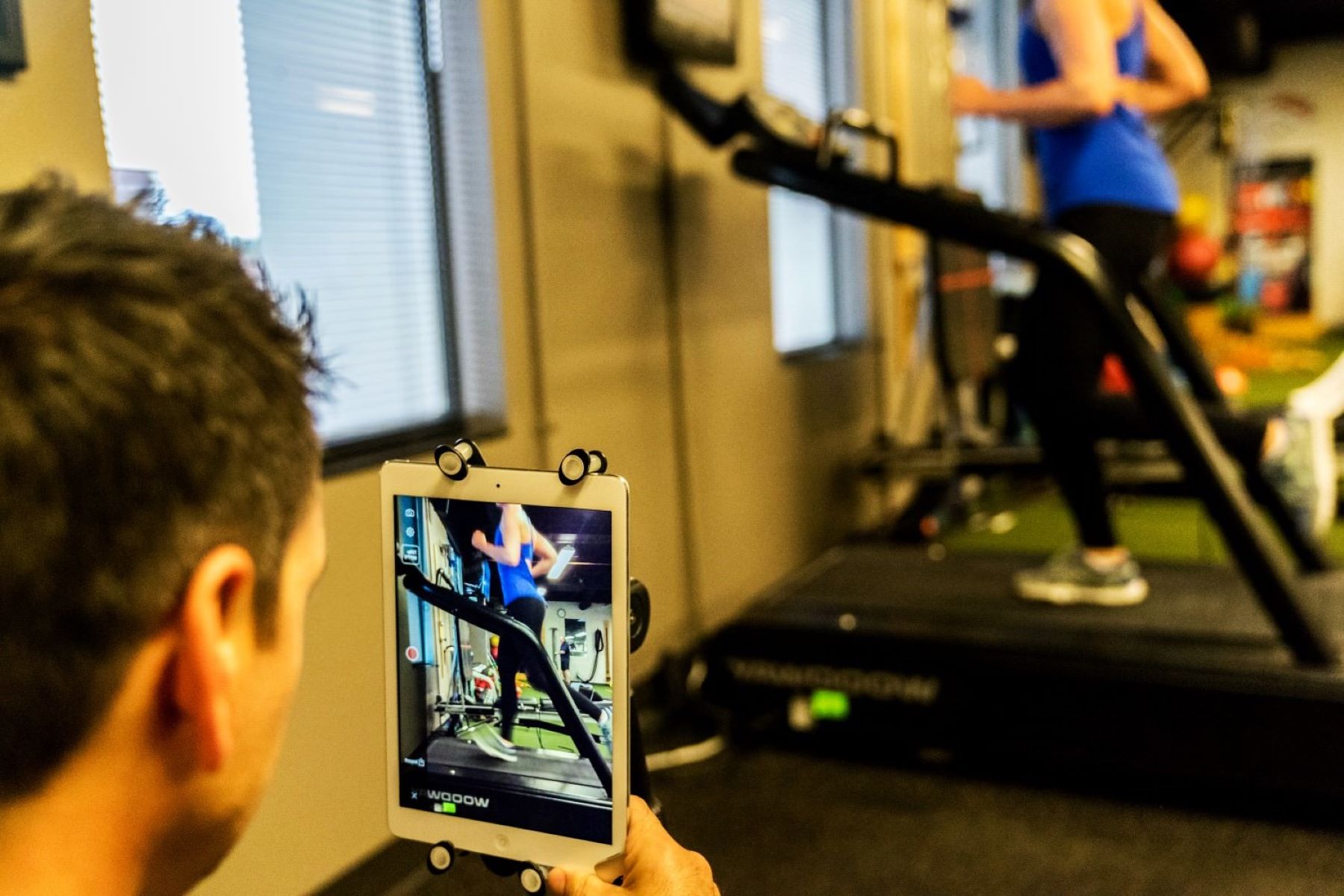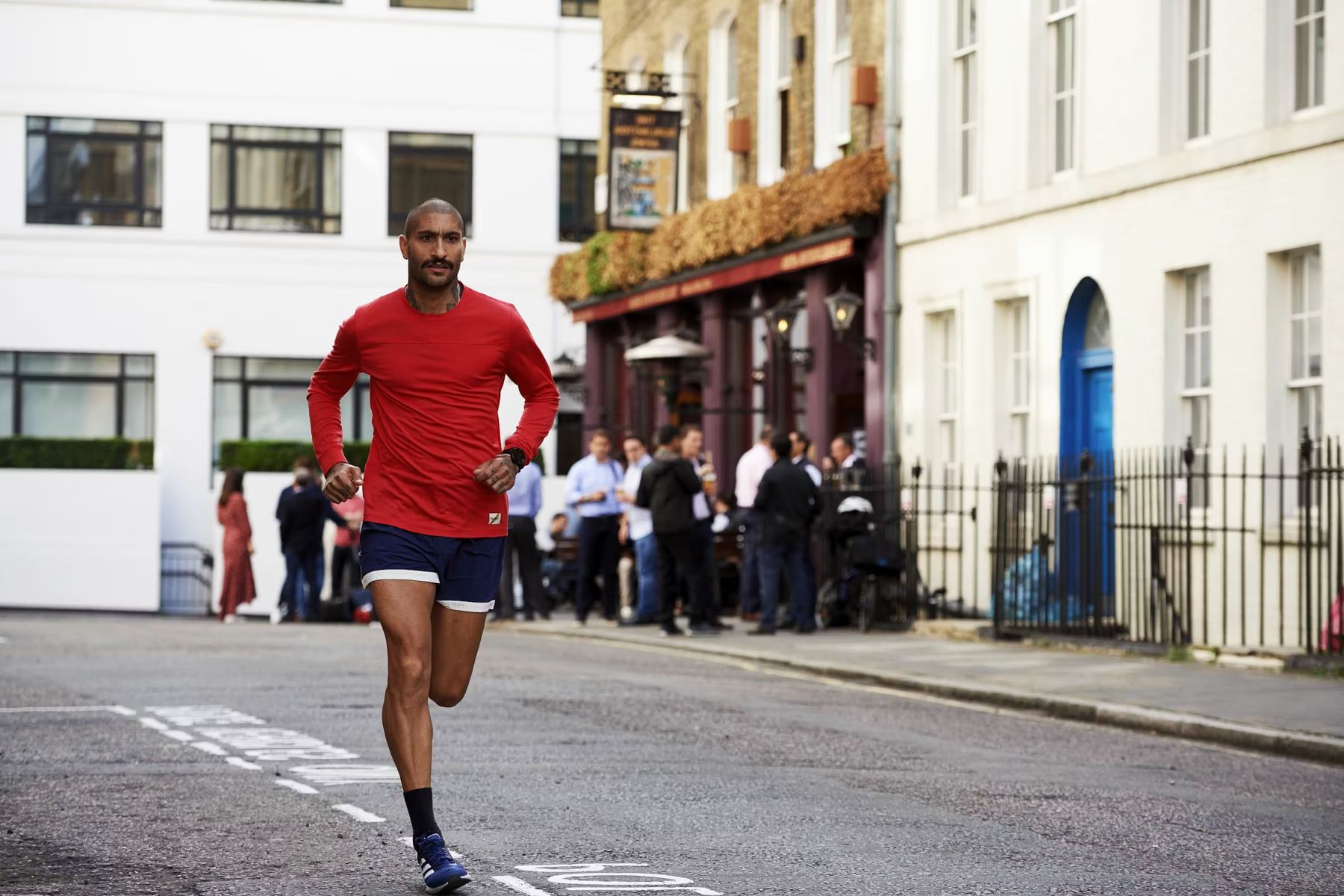Home>Training & Techniques>Improving Running Performance Through Gait Analysis
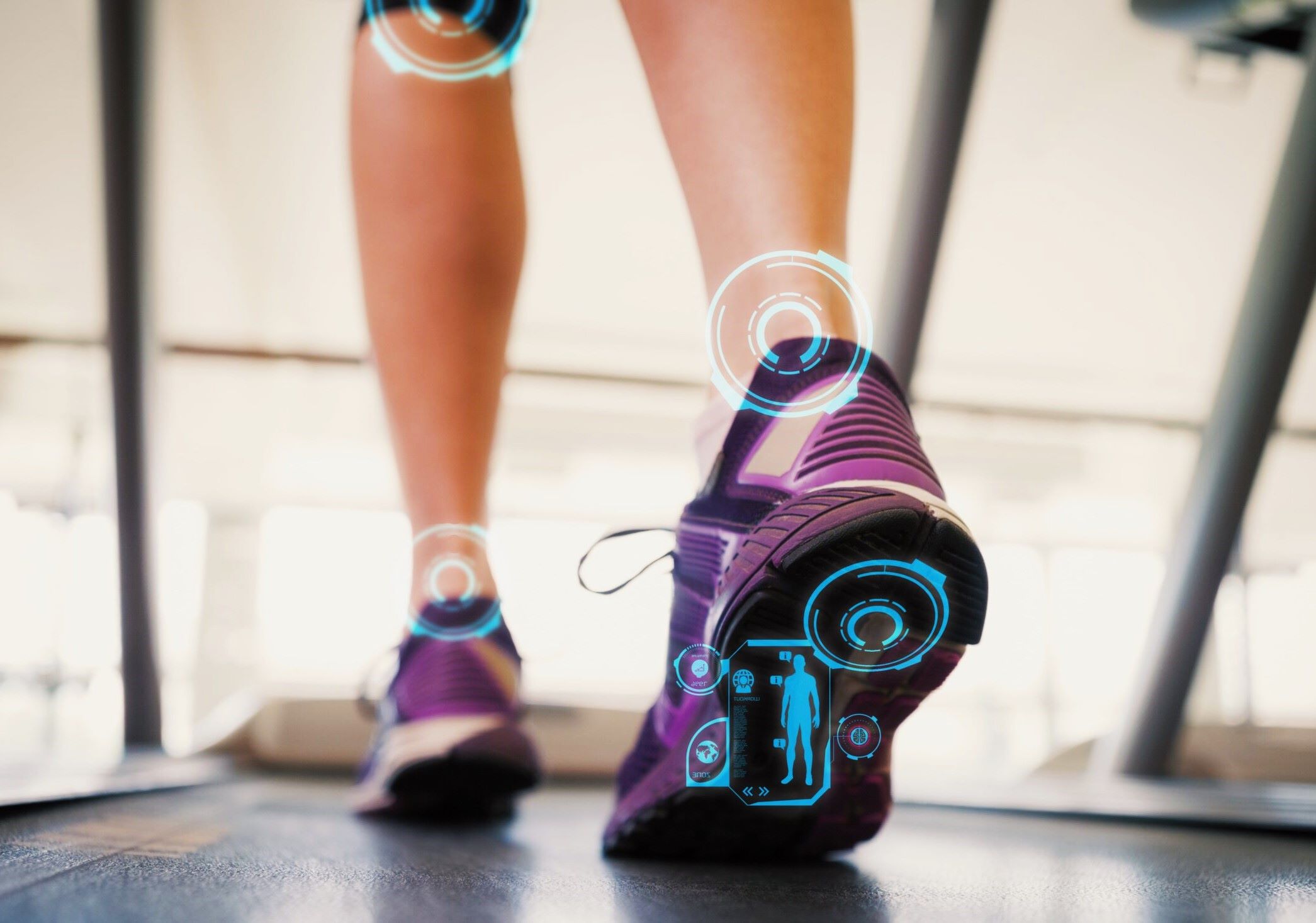

Training & Techniques
Improving Running Performance Through Gait Analysis
Published: March 1, 2024
Improve your running performance with gait analysis. Discover effective training and techniques to enhance your stride and speed.
(Many of the links in this article redirect to a specific reviewed product. Your purchase of these products through affiliate links helps to generate commission for Therunningadvisor.com, at no extra cost. Learn more)
Table of Contents
Introduction
Gait analysis is a powerful tool that has revolutionized the way runners approach their training and performance. By delving into the intricate details of a runner's gait, this technique provides invaluable insights into biomechanics, movement patterns, and potential areas for improvement. Whether you're a seasoned marathoner or a novice jogger, understanding the nuances of gait analysis can significantly impact your running journey.
In the following sections, we will explore the fundamentals of gait analysis, common running gait issues, the benefits of gait analysis for runners, techniques for improving running performance, and the seamless integration of gait analysis into training. Additionally, we will delve into real-life case studies that exemplify the transformative power of gait analysis. Through this comprehensive exploration, you will gain a deeper understanding of how gait analysis can elevate your running experience.
As we embark on this journey, it's essential to recognize the pivotal role of gait analysis in optimizing running performance. This technique goes beyond the surface-level assessment of running form; it delves into the intricate interplay of muscles, joints, and movement dynamics. By scrutinizing these elements, gait analysis unveils a wealth of information that empowers runners to refine their technique, prevent injuries, and unlock their full potential.
In the fast-paced world of running, where every stride counts, gait analysis serves as a guiding light, illuminating the path to enhanced performance and longevity in the sport. Whether you're aiming to shave seconds off your personal best or simply seeking a more fluid and efficient running style, gait analysis offers a personalized roadmap to success.
As we delve deeper into the realm of gait analysis, it's important to approach this journey with an open mind and a willingness to embrace new insights. By doing so, you'll be poised to harness the transformative power of gait analysis and embark on a journey of self-discovery and athletic growth. So, lace up your running shoes and prepare to embark on a captivating exploration of gait analysis and its profound impact on the world of running.
Understanding Gait Analysis
Gait analysis is a comprehensive assessment of an individual's biomechanics and movement patterns during walking or running. It involves the systematic observation, measurement, and evaluation of various parameters, including stride length, foot strike pattern, hip and knee alignment, and overall body mechanics. By scrutinizing these intricate details, gait analysis provides valuable insights into an individual's unique movement patterns and biomechanical tendencies.
There are two primary methods of conducting gait analysis: observational and instrumental. Observational gait analysis involves visually assessing an individual's gait, looking for irregularities or asymmetries in their movement patterns. This method provides valuable initial insights but may lack the precision offered by instrumental gait analysis.
Instrumental gait analysis, on the other hand, utilizes advanced technologies such as pressure-sensitive mats, motion capture systems, and 3D imaging to precisely quantify various aspects of a person's gait. These technologies enable the measurement of parameters such as ground reaction forces, joint angles, and timing of muscle activation, offering a more detailed and objective assessment of gait mechanics.
Gait analysis serves as a powerful diagnostic tool, allowing healthcare professionals, coaches, and athletes to identify potential issues or inefficiencies in a runner's gait. By pinpointing specific areas of concern, such as overpronation, excessive hip drop, or asymmetrical weight distribution, gait analysis lays the foundation for targeted interventions and corrective measures.
Moreover, gait analysis extends beyond the realm of injury prevention and rehabilitation; it plays a pivotal role in enhancing running performance. By understanding the intricacies of an individual's gait, runners can optimize their biomechanics, improve energy efficiency, and minimize the risk of overuse injuries. This personalized approach to performance enhancement sets gait analysis apart as a transformative tool in the realm of running.
In essence, gait analysis empowers individuals to gain a deeper understanding of their unique movement patterns and biomechanical tendencies. By leveraging this knowledge, runners can embark on a journey of self-improvement, honing their technique, and unlocking their full athletic potential. As we delve deeper into the world of gait analysis, it becomes evident that this technique holds the key to unraveling the intricacies of human movement and optimizing running performance.
Common Running Gait Issues
In the realm of running, gait issues are prevalent among athletes of all levels, often stemming from biomechanical imbalances, muscular weaknesses, or improper training techniques. These gait irregularities can manifest in various forms, impacting an individual's running efficiency, performance, and susceptibility to injuries. Understanding these common running gait issues is pivotal in addressing and rectifying them effectively.
-
Overpronation: This prevalent gait issue involves excessive inward rolling of the foot during the stance phase of the gait cycle. Overpronation can lead to increased stress on the ankles, knees, and hips, potentially resulting in overuse injuries such as plantar fasciitis, shin splints, and IT band syndrome.
-
Supination: Also known as underpronation, this gait issue entails an outward rolling of the foot, placing excessive pressure on the outer edge. Runners with supination may experience heightened impact forces, leading to potential issues such as stress fractures and ankle sprains.
-
Uneven Weight Distribution: Irregular weight distribution between the left and right sides of the body can lead to asymmetrical movement patterns, potentially causing strain on one side of the body and predisposing runners to muscular imbalances and overuse injuries.
-
Excessive Hip Drop: A noticeable drop of one hip during the running stride can indicate weakness or imbalance in the hip abductor muscles. This gait issue may lead to increased stress on the lower back and hip joints, contributing to discomfort and reduced running efficiency.
-
Inefficient Arm Swing: The arms play a crucial role in maintaining balance and propelling forward momentum during running. Inefficient arm swing, characterized by excessive crossing over the body or excessive movement, can impact overall running efficiency and energy expenditure.
By recognizing these common running gait issues, runners can proactively address them through targeted interventions, corrective exercises, and personalized training strategies. Gait analysis serves as a fundamental tool in identifying these issues, allowing for tailored interventions to optimize running biomechanics and enhance overall performance.
Benefits of Gait Analysis for Runners
Gait analysis offers a myriad of benefits for runners, transcending the realms of injury prevention and performance enhancement. By delving into the intricacies of an individual's biomechanics and movement patterns, gait analysis serves as a transformative tool in the running community. Here are the key benefits that gait analysis brings to runners:
Injury Prevention and Rehabilitation
Gait analysis plays a pivotal role in identifying potential risk factors for injuries, allowing runners to proactively address biomechanical inefficiencies and movement irregularities. By pinpointing issues such as overpronation, supination, or uneven weight distribution, gait analysis empowers runners to implement targeted interventions, corrective exercises, and footwear modifications to mitigate the risk of overuse injuries. Furthermore, for runners recovering from injuries, gait analysis provides valuable insights into movement compensations and asymmetries, guiding the rehabilitation process towards a safe and effective return to running.
Performance Optimization
One of the most compelling benefits of gait analysis is its capacity to optimize running performance. By scrutinizing an individual's gait mechanics, including stride length, foot strike pattern, and hip alignment, gait analysis unveils opportunities for enhancing running efficiency and energy conservation. Armed with these insights, runners can refine their technique, improve their running economy, and maximize their overall performance potential. Whether aiming to achieve a new personal best or enhance endurance capabilities, gait analysis serves as a personalized roadmap to elevate running performance to new heights.
Personalized Training Strategies
Gait analysis provides runners with personalized insights that inform tailored training strategies. By understanding their unique movement patterns and biomechanical tendencies, runners can optimize their training regimens to address specific gait irregularities and weaknesses. This personalized approach enables runners to focus on targeted strength and mobility exercises, implement gait retraining protocols, and select footwear that aligns with their biomechanical needs. As a result, runners can embark on a journey of self-improvement, honing their technique, and unlocking their full athletic potential.
Long-Term Athletic Development
Beyond the immediate benefits, gait analysis contributes to long-term athletic development and sustainability in running. By addressing gait irregularities and biomechanical inefficiencies, runners can mitigate the risk of chronic injuries and overuse issues, fostering longevity in their running endeavors. This proactive approach to injury prevention and performance optimization sets the stage for sustained growth and fulfillment in the sport, allowing runners to pursue their passion for running with confidence and resilience.
In essence, gait analysis empowers runners to gain a deeper understanding of their unique movement patterns, biomechanical tendencies, and areas for improvement. By leveraging this knowledge, runners can embark on a journey of self-improvement, honing their technique, and unlocking their full athletic potential. As the running community continues to embrace the transformative power of gait analysis, the benefits it offers will undoubtedly shape the future of running, fostering a culture of informed, empowered, and resilient athletes.
Techniques for Improving Running Performance
Enhancing running performance encompasses a multifaceted approach that integrates biomechanical refinement, training strategies, and mental fortitude. By leveraging targeted techniques, runners can unlock their full potential and elevate their performance to new heights. Here are key techniques for improving running performance:
Biomechanical Optimization
Refining running biomechanics is fundamental to unlocking enhanced performance. Gait analysis serves as a cornerstone in identifying biomechanical inefficiencies and irregularities, laying the groundwork for targeted interventions. By addressing issues such as overpronation, supination, or inefficient arm swing, runners can implement gait retraining protocols, corrective exercises, and footwear modifications to optimize their movement patterns. Additionally, focusing on stride length, cadence, and foot strike pattern can enhance running efficiency and reduce the risk of overuse injuries, ultimately contributing to improved performance.
Strength and Conditioning
Incorporating targeted strength and conditioning exercises into training regimens is pivotal for enhancing running performance. By prioritizing exercises that bolster key muscle groups, such as the glutes, hamstrings, and core, runners can improve muscular endurance, stability, and power generation. This, in turn, translates to enhanced running economy, reduced fatigue, and improved overall performance. Furthermore, integrating plyometric drills, resistance training, and functional movements can augment neuromuscular coordination and explosiveness, contributing to a more dynamic and efficient running stride.
Mental Preparation and Focus
The mental aspect of running plays a significant role in performance enhancement. Techniques such as visualization, positive self-talk, and goal setting can fortify mental resilience and focus during training and competition. By visualizing successful race scenarios, affirming personal capabilities, and setting incremental goals, runners can cultivate a mindset primed for peak performance. Moreover, mindfulness practices and stress management techniques can mitigate performance anxiety and optimize mental clarity, allowing runners to harness their full potential on race day.
Periodization and Recovery
Strategic periodization of training cycles, coupled with prioritized recovery strategies, is essential for sustained performance improvement. By structuring training phases to incorporate base building, speed work, and tapering, runners can optimize physiological adaptations and peak performance for key events. Additionally, prioritizing recovery modalities such as adequate rest, nutrition, and recovery-focused activities fosters muscular repair, adaptation, and injury prevention. This holistic approach to training periodization and recovery optimization sets the stage for consistent performance gains and long-term athletic development.
Incorporating these techniques into training routines empowers runners to embark on a journey of continuous improvement and performance enhancement. By embracing biomechanical refinement, strength and conditioning, mental fortitude, and strategic training methodologies, runners can unlock their full potential and achieve their performance aspirations. As the running community continues to embrace these techniques, the landscape of running performance will undoubtedly evolve, fostering a culture of informed, empowered, and resilient athletes.
Implementing Gait Analysis into Training
Integrating gait analysis into training regimens is a transformative approach that empowers runners to optimize their biomechanics, enhance performance, and mitigate the risk of injuries. By seamlessly incorporating gait analysis insights into training, runners can embark on a journey of self-improvement and athletic growth. Here's a comprehensive exploration of how gait analysis can be effectively implemented into training:
Personalized Training Plans
Gait analysis serves as the cornerstone for developing personalized training plans tailored to address specific biomechanical inefficiencies and movement irregularities. By leveraging gait analysis insights, coaches and athletes can design targeted interventions, corrective exercises, and gait retraining protocols that align with an individual's unique movement patterns. This personalized approach ensures that training regimens directly address biomechanical weaknesses, fostering enhanced running efficiency and performance gains.
Gait Retraining Protocols
Gait analysis facilitates the implementation of targeted gait retraining protocols aimed at refining running biomechanics. By leveraging real-time feedback and biomechanical insights, runners can focus on modifying their stride length, foot strike pattern, and overall movement dynamics to optimize running efficiency. This iterative process of gait retraining empowers runners to gradually refine their technique, minimize energy wastage, and reduce the risk of overuse injuries, ultimately enhancing their overall performance potential.
Footwear and Equipment Selection
Gait analysis plays a pivotal role in guiding footwear and equipment selection, ensuring that runners invest in gear that aligns with their biomechanical needs. By scrutinizing factors such as pronation, foot strike pattern, and arch support requirements, gait analysis informs the selection of running shoes that promote optimal biomechanical alignment and support. Additionally, insights from gait analysis can guide the utilization of orthotic inserts, compression gear, and other supportive equipment to enhance running comfort and performance.
Progress Monitoring and Adaptation
Integrating gait analysis into training allows for ongoing progress monitoring and adaptation. By periodically reassessing gait mechanics and movement patterns, runners can track their biomechanical improvements and make necessary adjustments to training strategies. This iterative process of monitoring and adaptation ensures that training regimens evolve in tandem with biomechanical enhancements, fostering sustained performance gains and long-term athletic development.
Holistic Approach to Performance Enhancement
By seamlessly integrating gait analysis into training, runners adopt a holistic approach to performance enhancement that transcends traditional training paradigms. This approach prioritizes biomechanical refinement, injury prevention, and personalized training strategies, laying the foundation for comprehensive athletic growth. As gait analysis becomes an integral component of training, runners are poised to unlock their full potential and achieve their performance aspirations with informed, empowered, and resilient athleticism.
In essence, implementing gait analysis into training represents a paradigm shift in the realm of running, empowering athletes to optimize their biomechanics, enhance performance, and foster long-term athletic sustainability. As the running community continues to embrace this transformative approach, the landscape of training and performance enhancement will undoubtedly evolve, ushering in an era of informed, empowered, and resilient athletes poised for success.
Case Studies: Gait Analysis Success Stories
Case Study 1: Sarah's Journey to Injury-Free Running
Sarah, an avid runner, had been grappling with persistent knee pain that hindered her training and dampened her enthusiasm for the sport. Frustrated by recurring discomfort, she sought the expertise of a sports medicine specialist who recommended gait analysis to uncover the underlying causes of her discomfort. Through instrumental gait analysis, it was revealed that Sarah exhibited excessive pronation during her running gait, placing undue stress on her knees and contributing to her discomfort.
Armed with these insights, Sarah embarked on a targeted intervention plan that included gait retraining exercises, footwear modifications, and strength training focused on stabilizing her lower limbs. Over the following months, Sarah diligently implemented these interventions, gradually refining her running biomechanics and mitigating the excessive pronation that had plagued her. As a result, her knee discomfort subsided, and she experienced a newfound sense of fluidity and comfort in her running stride.
Case Study 2: Mark's Pursuit of Performance Excellence
Mark, a competitive marathoner, was determined to elevate his performance and achieve a breakthrough in his race times. Despite rigorous training regimens, he found himself grappling with persistent fatigue and inefficiencies in his running economy. Seeking to unravel the barriers holding back his performance, Mark underwent comprehensive gait analysis to gain insights into his biomechanics and movement patterns.
The gait analysis revealed that Mark exhibited an inefficient foot strike pattern and suboptimal arm swing, contributing to heightened energy expenditure and compromised running efficiency. Armed with these revelations, Mark collaborated with his coach to implement targeted gait retraining protocols and strength training regimens aimed at refining his running mechanics. Over time, Mark's dedication and strategic interventions yielded remarkable results. His running economy improved, and he experienced a notable reduction in fatigue during long-distance runs. Ultimately, armed with refined biomechanics and enhanced running efficiency, Mark achieved a significant personal best in his next marathon, marking a pivotal milestone in his pursuit of performance excellence.
Case Study 3: Emma's Resilience and Athletic Growth
Emma, a dedicated trail runner, encountered a series of setbacks due to recurring ankle sprains and instability during her off-road runs. Frustrated by the limitations imposed by her recurring injuries, she turned to gait analysis to uncover the root causes of her instability and devise a path towards resilience and athletic growth.
Gait analysis unveiled asymmetries in Emma's weight distribution and highlighted weaknesses in her ankle stabilization during running. Empowered by these insights, Emma incorporated targeted strength and balance exercises into her training routine, focusing on bolstering her ankle stability and addressing the identified asymmetries. As she diligently pursued these interventions, Emma's resilience and confidence on the trails grew. Her ankle stability improved, and she experienced a significant reduction in the frequency of sprains. Bolstered by her newfound stability and biomechanical refinement, Emma ventured into challenging trail races with renewed vigor, embracing the joy of running without the limitations of recurring injuries.
These case studies exemplify the transformative power of gait analysis in the realm of running. By uncovering biomechanical irregularities, empowering targeted interventions, and fostering athletic growth, gait analysis serves as a catalyst for injury-free running, performance excellence, and resilience in the face of adversity. As runners continue to embrace the insights offered by gait analysis, these success stories will undoubtedly inspire a new wave of informed, empowered, and resilient athletes poised for success in their running endeavors.
Conclusion: The Future of Gait Analysis in Running
As the running community continues to embrace the transformative power of gait analysis, the future of this technique in running appears poised for remarkable evolution and widespread integration. The profound impact of gait analysis on injury prevention, performance enhancement, and athletic sustainability has positioned it as a cornerstone of informed, empowered, and resilient athleticism. Looking ahead, the future of gait analysis in running holds immense promise, shaping the landscape of training, performance optimization, and long-term athletic development.
The integration of advanced technologies, such as artificial intelligence and machine learning, into gait analysis methodologies is set to revolutionize the precision and depth of biomechanical assessments. By leveraging these cutting-edge tools, gait analysis will offer unprecedented insights into the intricate nuances of running biomechanics, enabling runners to refine their technique with unparalleled precision and efficacy. This technological convergence holds the potential to democratize access to gait analysis, empowering runners of all levels to benefit from personalized biomechanical insights and targeted interventions.
Furthermore, the seamless integration of gait analysis into wearable devices and smart coaching platforms is set to redefine the dynamics of real-time biomechanical feedback and intervention. Runners will have the opportunity to receive instantaneous insights into their gait mechanics, allowing for on-the-fly adjustments and refinements during training sessions and races. This real-time guidance, coupled with personalized training recommendations derived from gait analysis, will empower runners to optimize their biomechanics with unprecedented agility and responsiveness.
In the realm of injury prevention, the future of gait analysis holds the promise of proactive risk mitigation through predictive analytics and early intervention strategies. By leveraging comprehensive biomechanical data, gait analysis will enable the identification of subtle movement irregularities and asymmetries, allowing for targeted interventions to preemptively address potential injury triggers. This proactive approach to injury prevention, rooted in the insights gleaned from gait analysis, will foster a culture of resilient and injury-free running, shaping the future of athletic sustainability.
Moreover, the future of gait analysis in running extends beyond individual performance enhancement, encompassing the collective advancement of the running community. By aggregating anonymized biomechanical data from diverse cohorts of runners, gait analysis stands to contribute to the elucidation of global movement patterns, biomechanical trends, and performance benchmarks. This collective intelligence derived from gait analysis insights will inform the development of evidence-based best practices, training methodologies, and injury prevention strategies, fostering a culture of collaborative growth and knowledge sharing.
In essence, the future of gait analysis in running is characterized by a convergence of technological innovation, personalized precision, proactive injury prevention, and collective advancement. As runners continue to embrace the transformative power of gait analysis, the future holds the promise of informed, empowered, and resilient athleticism, shaping a new era of running excellence and sustainability.

